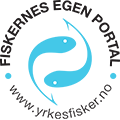Ergonomics
Planning the work environment with focus on people.
 New work equipment taken on board must be evaluated from an ergonomic point of view. The work equipment already on board must be adjusted and maintained so that it is in good condition and working order.
New work equipment taken on board must be evaluated from an ergonomic point of view. The work equipment already on board must be adjusted and maintained so that it is in good condition and working order.
Work areas and equipment must be designed and placed so that workers are not exposed to unfortunate physical or mental strain because of manual handling, working positions, repetitive movement, work intensity etc. that may cause injury or illness.
The work place and work equipment must be adapted to individual work positions, and be designed and placed so as to reduce risk of incorrect actions that may have an impact on safety.
When carrying out work operations from the normal place of work and with a good ergonomics, the worker must have sufficient visibility to ensure that operations can be carried out safely.
Make sure that you do not…
- lift objects with your arms stretched out in front of the body
- bend the lumbar region of your back when you lift
- do twists or turns when lifting
If you are moving an object to another location or handing it over to another person not directly in front of you, it is important that you complete the lift before turning, and that you do not make twisting movements or turns during the lift itself.
Use available technical aids to lift if these do not add extra risk. Examples of such aids are tackles, straps, wires, spreaders, adjustable tables, pallet wagons, pallet lifters, forklifts, trolleys, cage trolleys, etc.
Relevant literature:
Ergonomics - noise - vibrations (pdf)
Risk assessment
It is required that hazards on board the fishing vessel are identified and assessed according to the level of risk these pose to people, environment and equipment.
Read moreRisk assessment with FiskRisk
The application FiskRisk is a useful tool for charting risk associated with operations carried out on your vessel.
Read more Yrkesfisker
Yrkesfisker